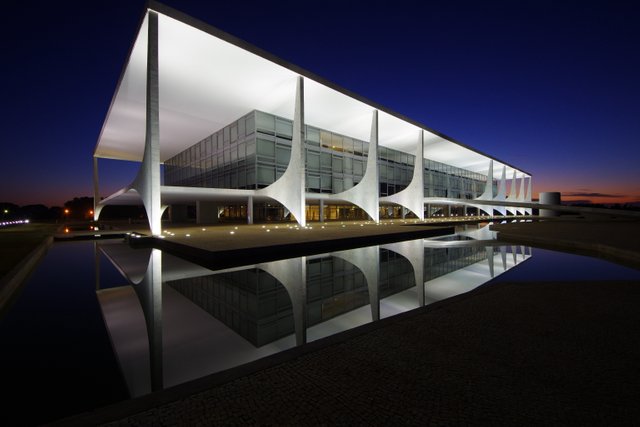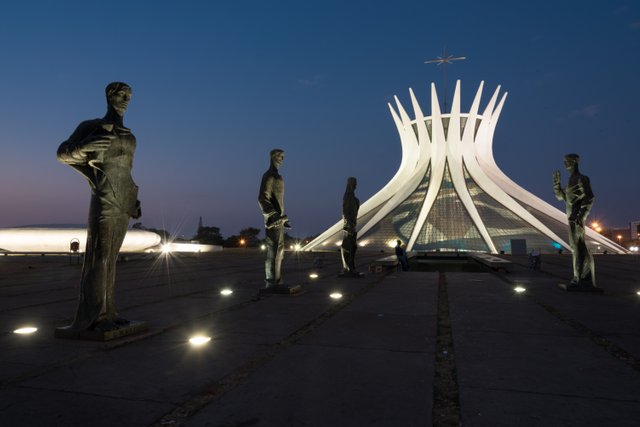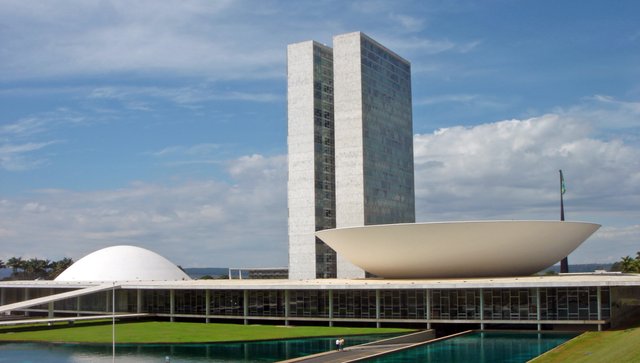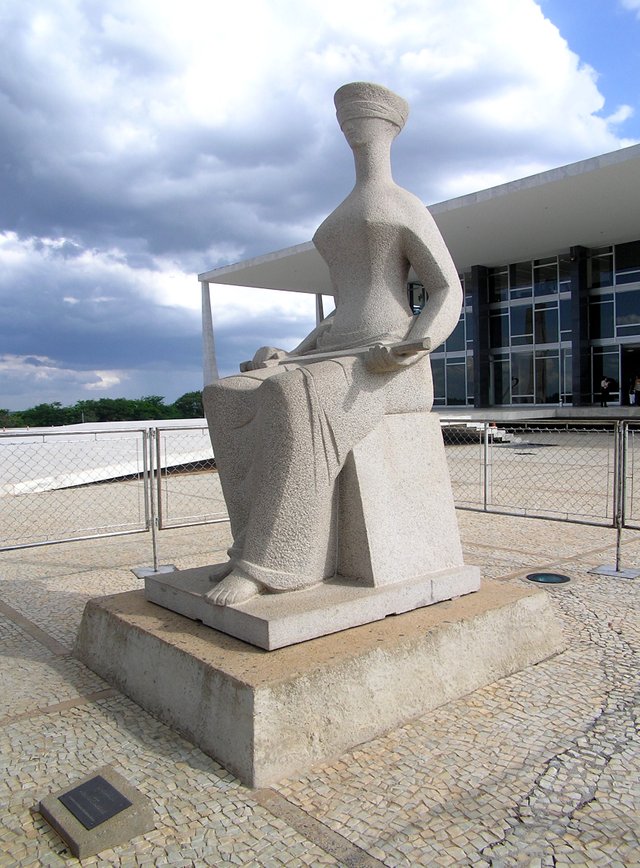Hello my friends! On the day of the presidential elections in my country, there is no other subject here. But where will the new president of the Federative Republic of Brazil live? This is the subject of this article.
The Planalto Palace:
It is the place of work of the President of Brazil, in which are located the Presidential Office of the President of the Republic, the Civil House, the General Secretariat and the Office of Institutional Security of the Presidency of the Republic. It is also the seat of executive power of the Brazilian Federal Government.
It is located in the Three Powers Square in Brasilia and was one of the first buildings built in the new capital. The inauguration of the Planalto Palace on April 21, 1960 was the center of the commemorations of the inauguration of Brasilia and marks the Brazilian history for symbolizing the transfer of the Federal Capital to the center of the country, promoted in the Government of President Juscelino Kubitschek de Oliveira .

Dusk in the Planalto Palace
The construction of the building began on July 10, 1958, and, until its conclusion, the seat of the Federal Executive Branch functioned at Catetinho Palace; a wooden house, inaugurated on October 31, 1956, on the outskirts of Brasilia.
The Planalto Palace project, designed by the architect Oscar Niemeyer, impresses by the purity of its lines with predominance of horizontal strokes and exquisite plastic effect.
The building enchants by the beauty of the columns, so defined in the words of its architect: "Slight as feathers landing on the ground".
The main façade is characterized by the ramp giving access to the noble hall, where great events are held and also on special occasions such as the visit of foreign dignitaries. The Parlate, located to the right of the main entrance, is the place where the President and guests can address the people concentrated in the square. It was used on the inauguration day of Brasilia and on other rare occasions.
Metropolitan Cathedral of Brasilia:

Entrance of the Metropolitan Cathedral of Brasilia
Inaugurated in 1970, and designed by Oscar Niemeyer, the Cathedral has a unique format, is 40 meters high, formed by 16 curved concrete columns that meet in the center.
The bronze statues of the four evangelists guard the church entrance, which has its access down a sloping ramp to the basement. The interior of the Cathedral is very well lit by natural light coming from the colorful stained glass ceiling.

Internal view of the ceiling of the Metropolitan Cathedral of Brasilia
Inside the cathedral, on the nave, are three angel sculptures, suspended by steel cables. The shortest is 7.28 ft long and weighs 200 lbs, the average is 11.15 ft in length and weighs 440 lbs and the largest is 13.94 ft and weighs 661 lbs. The sculptures are by Alfredo Ceschiatti with the collaboration of Dante Croce in 1970. The altar was donated by Pope Paul VI and the image of the patroness of Our Lady of Aparecida is the replica of the original that is in the municipality of Aparecida, São Paulo. The Way of the Cross is a work of Di Cavalcanti. Under the main altar is a small chapel accessible on either side of the altar.
National Congress:
Headquarters of the Brazilian Legislative Branch, it has in its interior a vast cultural and landscape heritage. The 2 H-shaped buildings have 28 floors and house administrative activities.
In the convex dome is the plenary of the Chamber of Deputies and in the concave, the one of the Federal Senate. Around the main buildings are the annexes.
Free external tour.
Guided internal visit: All visits inside the Congress are free, however, with the accompaniment of a guide, and in some situations it is necessary to schedule.

Palace of the National Congress - Brasília, Federal District
The Congress was hosted in Rio de Janeiro from Independence until 1960. From 1926, the Tiradentes Palace housed the work of the National Congress. In 1960, there was the transfer to Brasilia, and since then the National Congress operates in the Nereu Ramos Palace. Like most official Brazilian buildings, the congress building was designed by Oscar Niemeyer, and follows the style of modern Brazilian architecture. The engineer responsible for the structural calculation of the building was the engineer Joaquim Cardozo.
The Justice:
The Justice is a sculpture located in front of the building of the Federal Supreme Court, in Brasilia. It was made in 1961 by the mining artist Alfredo Ceschiatti, in a monolithic block of granite from Petrópolis, measuring 3.3 meters in height and 1.48 meters in width. The sculpture represents the judiciary as a woman blindfolded and sword, blindfolds represent the impartiality of justice, and the sword represents the strength, courage, order, and rule necessary to enforce justice. But the sculpture does not show the balance, which would represent its intention to level the legal treatment of all equally, the interests of the parties to the dispute.

Sculpture "The Justice"
The symbolism of this sculpture originates in the Roman goddess Justice, which corresponds to the Greek Dice, daughter of Zeus with Thêmis, the guardian of the oaths of men. That was a bit of Brasilia, the city that will be the residence of the new president of Brazil, who will be elected today.
And you, what did you think of the city? If you liked it, do not forget to vote, comment and resteem because this is a great incentive so I can produce more quality content. Thank you!